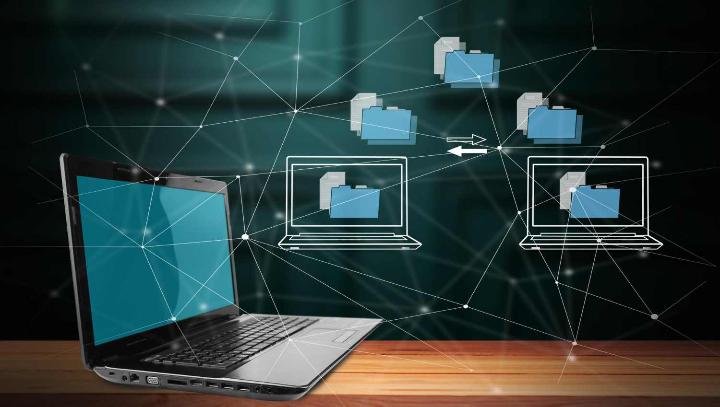What Are The Challenges in ERP Implementation?
Implementing an Enterprise Resource Planning (ERP) system is quite challenging because it is a complex process that has a big impact on the whole organization. It completely changes how things are done, shifting from manual work to automation.
Everyone in the organization has to come together and tackle the challenge of implementing ERP to ensure successful ERP implementation. Users and different functional groups have to figure out how to adapt to the new solution.
It is important for senior managements to be involved in overcoming these difficulties. That is why having a dedicated project team representing all users is crucial.
This team ensures that the needs of all departments and levels of the organization are taken into account when implementing the ERP system.
In this blog, we have listed 6 Common Challenges of ERP Implementation to ensure a smooth ERP implementation in your organization. Let's dive in!
6 Common Challenges of ERP Implementation
Choosing the right ERP vendor
Difficulty of data migration
Lack of flexibility in the system
Inadequate training for employees
Inadequate testing before Go Live
High implementation and maintenance cost
Choosing the right ERP vendor
When you are looking for an ERP system, it can be tiresome to see all the options out there. Each software has different, unique functions and features, and they all claim to be the best.
But the truth is, you won’t really know how well it works for your business until you implement it. That’s why you can’t just take their word.
You have to do careful research on the vendors — check their background and reputation. It is also a good idea to talk to at least 5 different providers before making a final decision.
It might sound like a lot of work, but it is worth it to ensure you are getting the right system that tailors your business nature and unique needs.
Is Onnet Consulting your preferred choice of ERP vendor?
Difficulty of data migration
One of the major parts of ERP implementation is migrating all your old data into the new system. But, it is not as easy as copying and pasting.
Especially if your company has multiple divisions using different systems, the data is highly fragmented. Sometimes, the old system makes it even hard to transfer the data over.
This can lead to data quality issues which can be a disaster for your business.
To get it right, you need to identify which workflows and systems will be helped by integration, and which ones will just slow things down and should be scrapped.
Then, you’ll need to spend time, money, and effort cleaning up the data — delete the duplicate data, standardize naming conventions, remove unwanted data, and so on.
It might take some time to get everything just right, but it's worth it in the end. When you have one truthful source of data for your entire organization, it makes decision-making so much easier.
 Lack of flexibility in the system
Lack of flexibility in the system
Using an ERP system that can’t adapt to changes and grow with your business growth can be a real pain for entrepreneurs.
Because your company has to change the way it usually operates just to make the ERP system work, instead of the other way around. This just doesn’t make sense.
Plus, retraining your team and getting them on board with these changes can be tough. Things get even worse if your teams refuse to change.
But, the good news is that you can avoid these problems by choosing a flexible ERP system that can integrate different functions seamlessly, without causing too many changes.
That way, you can focus on growing your business, instead of constantly reorganizing your company to fit your ERP system which needs more time and work than valuable tasks.
 Inadequate training for employees
Inadequate training for employees
ERP training is also crucial for success. Most of the time, users don’t fully understand how to use the system and how the system helps them.
Without proper training, the new ERP system may not be used consistently, and all the potential benefits of the system won’t be realized. As a result, businesses lose the opportunities to streamline complex processes, increase efficiency, and hit more targets.
So, it is all for nothing if you have invested in world-class ERP software but your team isn’t well-trained in how to use it.
To avoid this, you can’t let unskilled or semiskilled staff go on board. You should partner with an experienced provider to train the trainer and build a team of power users to help others get up to speed.
After go-live, your employees can effortlessly use the ERP software to carry out their daily tasks, improving the overall business performance of your company.
 Inadequate testing before Go Live
Inadequate testing before Go Live
Testing an ERP system is not just about ensuring it runs smoothly, it is also about making sure it meets your business needs. Even if you have nailed the requirements and expectations, skipping testing can cause some big problems down the road.
You will face the issues like data loss, trouble fixing problems, lack of scalability, and more after the system Go Live. All these will end up with increased costs and workload, leading your business to a downfall.
Take more effort to check whether your ERP system is working as expected before ERP system is implemented. Let your teams test the functionality they will be using daily and collect feedback from them.
This will greatly help to reduce resistance and make the transition much easier.
Don't hesitate to seek advice from expert teams to improve business processes using new systems instead of replicating the old way of doing things.
 High implementation and maintenance cost
High implementation and maintenance cost
In ERP system implementation, the initial cost is just the tip of the iceberg. Customization and maintenance can add up the cost quickly.
Before you know it, you already facing budget breaks. And, don’t forget other expenses like training, support, and hardware can all add up and disrupt your budget plans.
Adding unexpected customization and maintenance costs is a surefire way to get a cost overrun. Beyond the additional costs, changes to the budget can lead to delays in the implementation or even a reduction in the project’s scope dramatically.
To avoid this problem, it is important to be proactive about budgeting.
Take a close look at your business process and needs, so you can identify any necessary customizations or maintenance through gap analysis with your partner.
This helps you to get an accurate estimate from your partner and is easier for you to hold your partner to their estimates.
Implementing an ERP system can be overwhelming, but the benefits are undeniable. With the right software partner to guide you through the process, it can be a breeze.
If the challenges sound too much for you, don’t worry. Our expert teams at Onnet Consulting can help you with all this to get you the perfect ERP system for your business. And, you can continue to focus on growing your business.

